Location and operation
The location of the local door varies and is usual in multiple locations on the train, and sometimes does not require a switch to operate in the case of outside doors to Brake Vans or Driving Van Trailers for example.
It is used to allow train crew to access the train without the use of the general passenger doors or for use in the Guards dispatch duties leaving a station. The public are not permitted to use this device and it should be impossible for a member of the public to access it. Brake Van doors and control panel covers for instance require keys to open, and in the case of door control panels require another key to prime them for use. Local door switches in the open position while disarmed usually activate the train's emergency braking systems; this prevents a door from opening by accident when a crew member arms the control while in motion.
Onboard trains
On coaching stock trains fitted with central door locking (slam door), there is no ‘local door’ except on the train's Guard's van. Local instructions allow the Guard to operate train doors from any location it is safe to do so, or where regulations require them to do so. Once it is required, the Guard can lock all doors without requiring to close their door, as the locking bolt does not activate until the door is closed. Coaching stock trains with power doors, like the Mark 4 used on the East Coast Main Line, have local door switches at all door control panel locations.
All multiple unit trains have local door switches, located in various locations. These are always located on cab doors which can be locked for security. Most of the rest are located on door control panels and require the Guard open their local door and step onto the platform before opening the remaining passenger doors, thus making sure their train is accommodated correctly on the platform. In some cases, where the driver releases the doors, the Guard uses a switch to isolate their door from the rest to prevent it closing when the other passenger doors are closed. The Guard will observe the doors closing, and is required to remain on the platform until all doors are closed and it is safe to proceed. They will then will close their door before starting the train.
In engineering, a fail-safe is a design feature or practice that, in the event of a failure of the design feature, inherently responds in a way that will cause minimal or no harm to other equipment, to the environment or to people. Unlike inherent safety to a particular hazard, a system being "fail-safe" does not mean that failure is impossible or improbable, but rather that the system's design prevents or mitigates unsafe consequences of the system's failure. That is, if and when a "fail-safe" system fails, it remains at least as safe as it was before the failure. Since many types of failure are possible, failure mode and effects analysis is used to examine failure situations and recommend safety design and procedures.
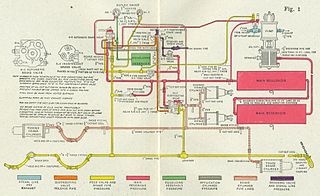
A railway air brake is a railway brake power braking system with compressed air as the operating medium. Modern trains rely upon a fail-safe air brake system that is based upon a design patented by George Westinghouse on April 13, 1869. The Westinghouse Air Brake Company was subsequently organized to manufacture and sell Westinghouse's invention. In various forms, it has been nearly universally adopted.

A conductor or guard is a train crew member responsible for operational and safety duties that do not involve actual operation of the train/locomotive. The conductor title is most common in North American railway operations, but the role is common worldwide under various job titles. In Commonwealth English, a conductor is also known as guard or train manager.

Brake van and guard's van are terms used mainly in the UK, Ireland, Australia and India for a railway vehicle equipped with a hand brake which can be applied by the guard. The equivalent North American term is caboose, but a British brake van and a caboose are very different in appearance, because the former usually has only four wheels, while the latter usually has bogies. German railways employed brakeman's cabins combined into other cars.

A dead man's switch is a switch that is designed to be activated or deactivated if the human operator becomes incapacitated, such as through death, loss of consciousness, or being bodily removed from control. Originally applied to switches on a vehicle or machine, it has since come to be used to describe other intangible uses, as in computer software.

On trains, the expression emergency brake has several meanings:
The Train Protection & Warning System (TPWS) is a train protection system used throughout the British passenger main-line railway network, and in Victoria, Australia.

A kill switch, also known more formally as an emergency brake, emergency stop (E-stop), emergency off (EMO), or emergency power off (EPO), is a safety mechanism used to shut off machinery in an emergency, when it cannot be shut down in the usual manner. Unlike a normal shut-down switch or shut-down procedure, which shuts down all systems in order and turns off the machine without damage, a kill switch is designed and configured to abort the operation as quickly as possible and to be operated simply and quickly. Kill switches are usually designed to be noticeable, even to an untrained operator or a bystander.
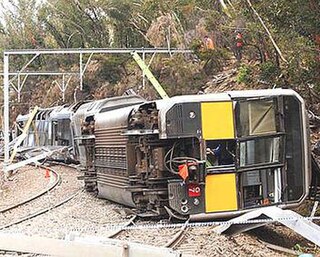
The Waterfall rail accident was a train accident that occurred on 31 January 2003 near Waterfall, New South Wales, Australia. The train derailed, killing seven people aboard, including the train driver. The accident is famously remembered by systems engineers due to the poorly designed safety systems.
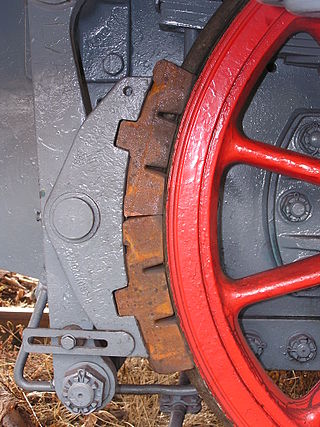
A railway brake is a type of brake used on the cars of railway trains to enable deceleration, control acceleration (downhill) or to keep them immobile when parked. While the basic principle is similar to that on road vehicle usage, operational features are more complex because of the need to control multiple linked carriages and to be effective on vehicles left without a prime mover. Clasp brakes are one type of brakes historically used on trains.

The AB Standard was a New York City Subway car class built by the American Car and Foundry Company and Pressed Steel Car Company between 1914 and 1924. It ran under the operation of the Brooklyn Rapid Transit Company (BRT) and its successors, which included the Brooklyn–Manhattan Transit Corporation (BMT), the New York City Board of Transportation, and the New York City Transit Authority (NYCTA). The cars were designed following the signing of the Dual Contracts, which called for a major expansion of the BRT. A total of 950 cars were built.
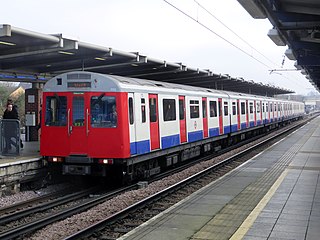
The London Underground D78 Stock, commonly referred to as D Stock, was a type of sub-surface rolling stock which operated on the District line of the London Underground, except on the Wimbledon to Edgware Road service. The first units were withdrawn in January 2015 with the last withdrawn on 21 April 2017.
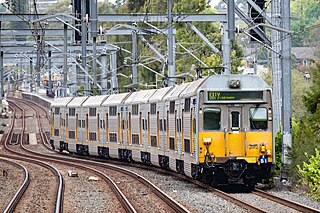
The Sydney Trains K sets are a class of electric multiple units that currently operate on the Sydney Trains network. Built by A Goninan & Co, the K sets first entered service in 1981 operating under the State Rail Authority, and later CityRail. The carriages are of stainless steel, double deck construction and share much of their design with the older S sets. All of the 40 K sets originally built remain in service and are currently the oldest in the Sydney Trains fleet.

A brakeman is a rail transport worker whose original job was to assist the braking of a train by applying brakes on individual wagons. The advent of through brakes, brakes on every wagon which could be controlled by the driver, made this role redundant, although the name lives on, for example, in the United States where brakemen carry out a variety of functions both on the track and within trains.

The Gare de Lyon rail accident, occurred on 27 June 1988, when an SNCF commuter train headed inbound to Paris's Gare de Lyon terminal crashed into a stationary outbound train, killing 56 and injuring 57, resulting in the third deadliest rail disaster in peacetime France.
Selective door operation (SDO), also known as selective door opening, is a mechanism employed primarily on trains that allows the driver or conductor/guard to open the doors of a train separately.

A car door is a type of door opening, typically hinged on its front edge, but sometimes attached by other mechanisms such as tracks, for entering and exiting a vehicle. Doors most often integrate side windows for visibility from inside the car and can be locked to secure the vehicle.
The electro-pneumatic brake system on British mainline railway trains was introduced in 1950 and remains the primary braking system for multiple units in service today, although London Transport underground trains had been fitted with EP brakes since the 1920s. The Southern Region of British Railways operated a self-contained fleet of electric multiple units for suburban and middle-distance passenger trains. From 1950, an expansion of the fleet was undertaken and the new build adopted a braking system that was novel in the UK, the electro-pneumatic brake in which compressed air brake operation was controlled electrically by the driver. This was a considerable and successful technical advance, enabling a quicker and more sensitive response to the driver's operation of brake controls.
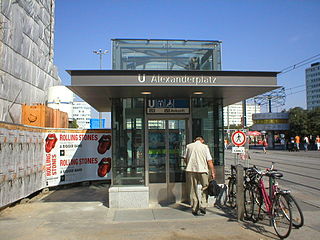
An elevator or lift is a machine that vertically transports people or freight between levels. They are typically powered by electric motors that drive traction cables and counterweight systems such as a hoist, although some pump hydraulic fluid to raise a cylindrical piston like a jack.
Buffers and chain couplers are the de facto International Union of Railways (UIC) standard railway coupling used in the EU and UK, and on some surviving former colonial railways, such as in South America and India, on older rolling stock. Buffers and chain couplers are an assembly of several devices: buffers, hooks and links, or turnbuckle screws.














